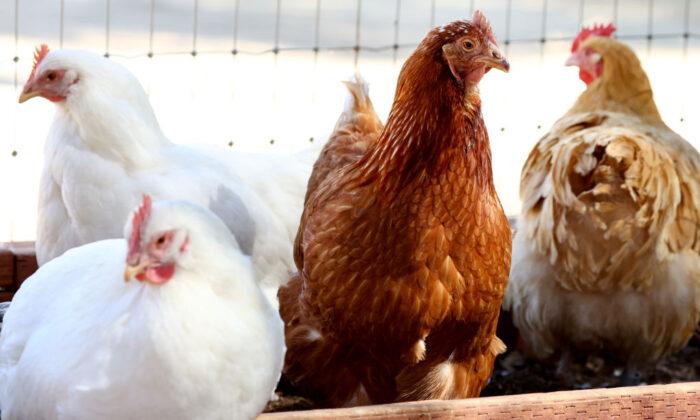Bird flu continues to spread across the globe, threatening stocks of poultry supplies.
The disease is extremely deadly to poultry, so much so that entire flocks are often culled even when only one bird tests positive.
Medical specialists now warn that the disease is a year-round problem, as poultry farmers struggle to protect their flocks.
It appears that waterfowl like ducks and geese can now carry bird flu without appearing sick and easily spread them to domesticated poultry like chickens and turkeys, experts say.
Wild birds are primarily responsible for spreading the virus and can carry the disease without dying and introduce it to poultry through contaminated bodily waste products.
More than 20 experts and farmers on four continents were interviewed by Reuters, who warned that the prevalence of the bird flu in the wild could perpetuate the number of outbreaks on poultry farms and act as a constant threat to the world’s food supply.
World Egg Prices Surge Due to Flu Killing Off Poultry Stocks
Global egg prices have skyrocketed due to a combination of the avian-borne disease and inflation.This has put one of the most basic sources of cheap protein increasingly out of the hands of millions of poor around the world.
Outbreaks of the virus have spread throughout North and South America, Europe, Asia, and Africa, and have not been deterred by weather.
The United States, Britain, France, and Japan have suffered greatly from record losses of poultry stocks over the past year, leaving many farmers feeling helpless.
In early 2022, a virulent strain arrived in the United States that was genetically similar to bird flu cases in Europe and Asia.
Total U.S. poultry deaths top 58 million birds, surpassing the previous 2015 record, according to U.S. government data.
Bird-Killing Virus Arrives in South America
South American nations are now reporting bird flu cases for the first time, with Peru, Ecuador, and Bolivia reporting their first cases in recent months.Meanwhile, Brazil, the world’s top global chicken exporter, remains free so far of cases but it still remains on alert.
Brazilian Agriculture Minister Carlos Favaro, told Reuters, that the country investigated three suspected cases, but all test results came back negative.
Ecuador imposed a three-month animal-health emergency on Nov. 29, two days after the virus was detected, according to the country’s Ministry of Agriculture and Livestock.
More than 1.1 million birds have died in Equador since then, according to Reuters.
Argentina and Uruguay both declared national emergencies after officials confirmed the presence of the disease on Feb. 15.
Avian Flu Not Usually Harmful to People
The avian flu can also infect wild mammals and people, especially those in contact with infected birds, but the World Health Organization says the risk to humans is low.Rose Acre Farms, the country’s second-largest egg producer in the United States, said it had lost about 1.5 million hens at a farm in Guthrie County, Iowa, last year.
All personnel who enter their barns were required to shower first to remove any trace of the virus, CEO Marcus Rust, told Reuters.
After a company farm in Weld County, Colorado, got hit twice within about six months, resulting in the culling of more than 3 million hens, Rust said, “we got nailed,” adding, “you just pull your hair out.”
Rust told Reuters that he eventually concluded that the wind blew the virus in from nearby fields where geese flew overhead.
In terms of prevention, vaccinations are not considered to be a perfect solution, as they merely reduce, but not eliminate the threat from the virus and it make it harder to detect its presence among a flock, experts told Reuters.
However, Mexico and the European Union are now implementing or are considering vaccinations for their poultry stocks.





